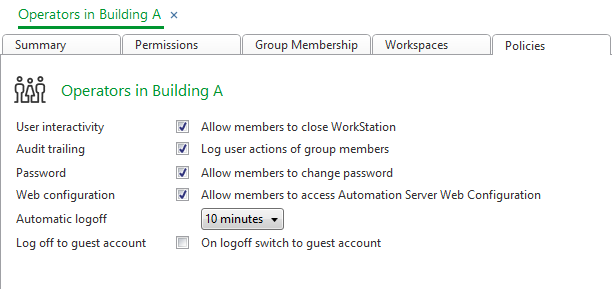Log on to rate and give feedback
1
2
3
4
5
Log on to rate
0

Como
Produtos:
AS-B, Enterprise Central, Enterprise Server, AS-P, Project Configuration Tool
Funcionalidades:
Gestão de utilizadores
Versão do produto:
3.2, 3.3, 2022
15-10-2020
Viewing an Audit Trail Log
You open an audit trail log to view the activities of a specific user.
To view an audit trail log
In WorkStation, in the System Tree pane, select the EcoStruxure BMS server you want to configure.
Click the Control Panel tab.
Click Account management .
In Account Management Control Panel, in the Domain list, select the domain the user account belongs to.
In the User Accounts list, select the user account.
Click Audit Trailing Events .
 Audit Trailing of User Activity
Audit Trailing of User Activity
 User Account Group – Policies Tab
User Account Group – Policies Tab
 User Account – Audit Trailing Events Tab
User Account – Audit Trailing Events Tab
 Enabling Audit Trail for a Group of Users
Enabling Audit Trail for a Group of Users
 Disabling Audit Trail for a Group of Users
Disabling Audit Trail for a Group of Users
